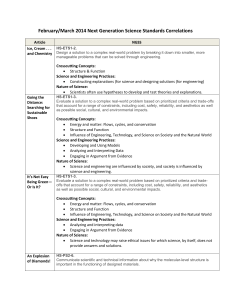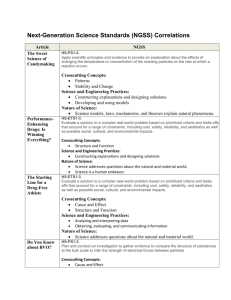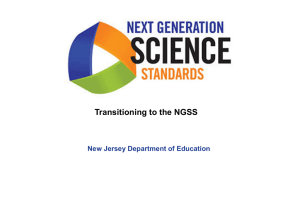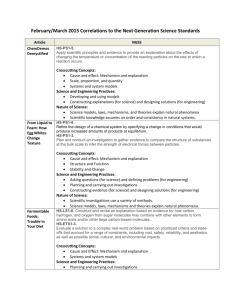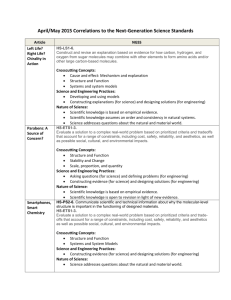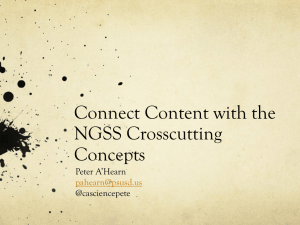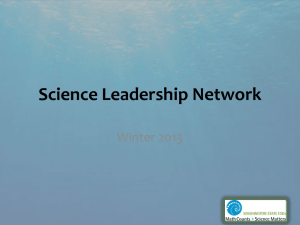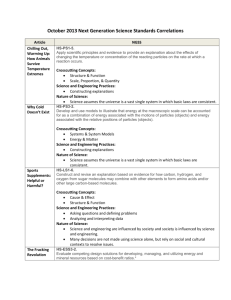Science-–-unpacked-NGSS
advertisement
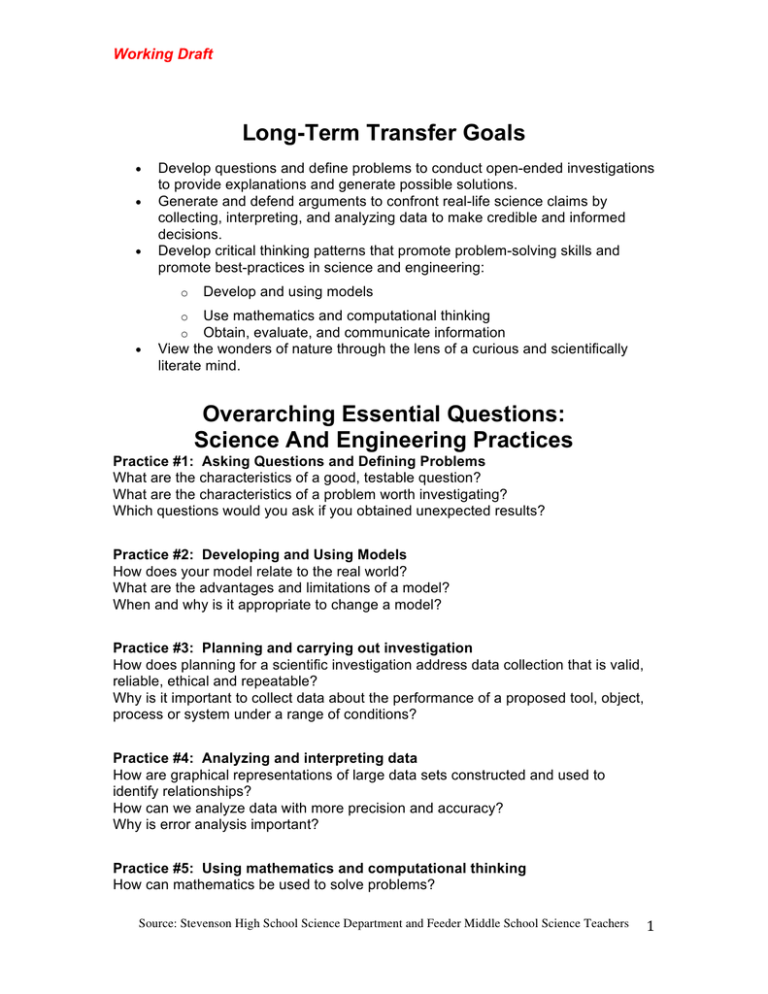
Working Draft Long-Term Transfer Goals • • • Develop questions and define problems to conduct open-ended investigations to provide explanations and generate possible solutions. Generate and defend arguments to confront real-life science claims by collecting, interpreting, and analyzing data to make credible and informed decisions. Develop critical thinking patterns that promote problem-solving skills and promote best-practices in science and engineering: o Develop and using models Use mathematics and computational thinking Obtain, evaluate, and communicate information View the wonders of nature through the lens of a curious and scientifically literate mind. o o • Overarching Essential Questions: Science And Engineering Practices Practice #1: Asking Questions and Defining Problems What are the characteristics of a good, testable question? What are the characteristics of a problem worth investigating? Which questions would you ask if you obtained unexpected results? Practice #2: Developing and Using Models How does your model relate to the real world? What are the advantages and limitations of a model? When and why is it appropriate to change a model? Practice #3: Planning and carrying out investigation How does planning for a scientific investigation address data collection that is valid, reliable, ethical and repeatable? Why is it important to collect data about the performance of a proposed tool, object, process or system under a range of conditions? Practice #4: Analyzing and interpreting data How are graphical representations of large data sets constructed and used to identify relationships? How can we analyze data with more precision and accuracy? Why is error analysis important? Practice #5: Using mathematics and computational thinking How can mathematics be used to solve problems? Source: Stevenson High School Science Department and Feeder Middle School Science Teachers 1 Working Draft How can mathematics be used to communicate an idea and/or defend an argument? When and how can mathematical ideas and data be generalized? Practice #6: Constructing explanations and designing solutions How can we identify when something is (or is not) a solution to a problem? How can data be used to summarize and/or draw conclusions about an experiment? When is it appropriate to use numerical data/patterns and the results of an experiment to make generalized statements about science? Why is it important to consider the constraints and/or criteria when designing and evaluating solutions? Practice #7: Engaging in argument from evidence How do scientists respond to different perspectives? Why is it important to acknowledge the weaknesses of your argument? How do you construct an argument using evidence to evaluate a scientific claim? Practice #8 – Obtaining, evaluating, and communicating information How do we decide what to believe about a scientific claim? How can we make an informed decision? What are the benefits of communicating information in multiple ways? How does science change over time? Overarching Essential Questions: Crosscutting Concepts Crosscutting Concept #1: Patterns How can patterns be used to predict results and solve problems? What is the relationship between patterns and natural phenomena? What is involved in identifying a pattern? How can you use identified patterns to justify claims? Crosscutting Concept #2: Cause/Effect Why is understanding cause and effect important to your life? How can cause and effect relationships help predict or explain future events? How can data mislead you in determining a cause & effect relationship? How do you distinguish between a cause and a correlation? Crosscutting Concept #3: Scale, Proportion and Quantity How do scale, proportion and quantity affect what can be observed? How do conceptual models allow me to observe and test what I cannot see? How can mathematical models be used to understand and/or predict scientific events? Source: Stevenson High School Science Department and Feeder Middle School Science Teachers 2 Working Draft Crosscutting Concept #4: Systems and System Models What is a system? How are the parts of a system related to the entire system? How are system models used to predict and understand real world situations or scientific phenomena? Crosscutting Concept #5: Matter and Energy What is energy, and what does it mean for it to be conserved? How are energy and matter related? How is energy measured? Crosscutting Concept #6: Structure and Function What is the connection between structure and function? How does structure and function apply to a given problem? What affects structure and function? Crosscutting Concept #7: Stability and change How do we measure change? How can something appear stable when it is actually changing? How does scale affect our ability to observe change? Source: Stevenson High School Science Department and Feeder Middle School Science Teachers 3
